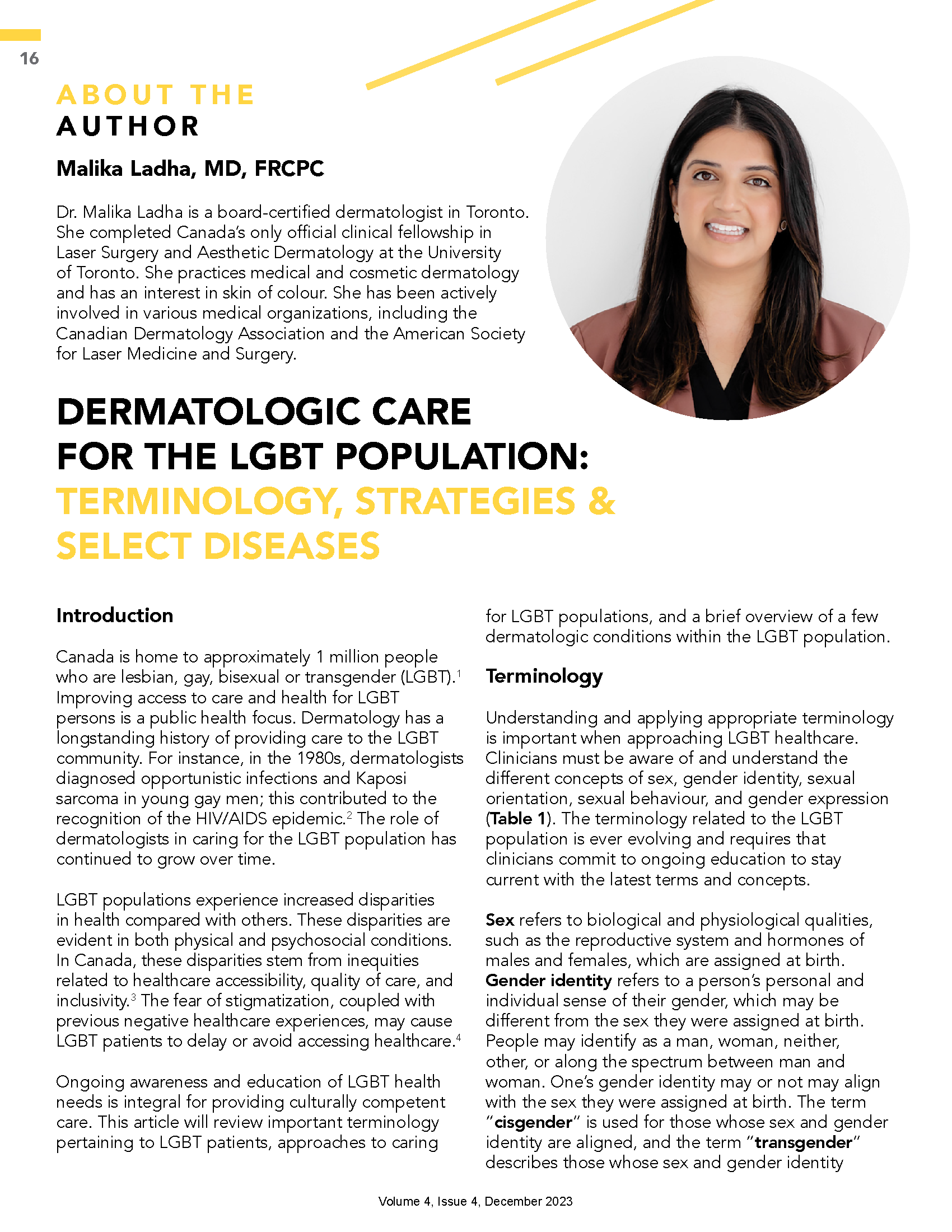Dermatologic Care for the LGBT Population: Terminology, Strategies & Select Diseases
Abstract
Canada is home to approximately 1 million people who are lesbian, gay, bisexual or transgender (LGBT). Improving access to care and health for LGBT persons is a public health focus. Dermatology has a longstanding history of providing care to the LGBT community. For instance, in the 1980s, dermatologists diagnosed opportunistic infections and Kaposi sarcoma in young gay men; this contributed to the recognition of the HIV/AIDS epidemic. The role of dermatologists in caring for the LGBT population has continued to grow over time.
References
Statistics Canada. Canada at a Glance, 2022: LGBTQ2+ people. Available from: https://www150.statcan.gc.ca/n1/pub/12-581-x/2022001/sec6-eng.htm [Accessed 13 October 2023]
HIV disease, from discovery to management: the major role of the dermatologist. J Am Acad Dermatol. 1990;22(6 Pt 2):1306-1318. doi:10.1016/0190-9622(90)70178-k
Comeau D, Johnson C, Bouhamdani N. Review of current 2SLGBTQIA+ inequities in the Canadian health care system. Front Public Health. 2023;11:1183284. doi:10.3389/fpubh.2023.1183284
Yeung H, Luk KM, Chen SC, Ginsberg BA, Katz KA. Dermatologic care for lesbian, gay, bisexual, and transgender persons: terminology, demographics, health disparities, and approaches to care. J Am Acad Dermatol. 2019;80(3):581-589. doi:10.1016/j.jaad.2018.02.042
LGBTQ+ Inclusive Language Guide. Edgehill University; accessed at: https://www.edgehill.ac.uk/departments/support/edi/getting-involved/lgbtqi-plus/inclusive-language-guide/
Althof SE, Rosen RC, Perelman MA, Rubio-Aurioles E. Standard operating procedures for taking a sexual history. J Sex Med. 2013;10(1):26-35. doi:10.1111/j.1743-6109.2012.02823.x
Haider AH, Schneider EB, Kodadek LM, Adler RR, Ranjit A, Torain M, et al. Emergency department query for patient-centered approaches to sexual orientation and gender identity: the EQUALITY Study. JAMA Intern Med. 2017;177(6):819-828. doi:10.1001/jamainternmed.2017.0906
Yeung H, Kahn B, Ly BC, Tangpricha V. Dermatologic conditions in transgender populations. Endocrinol Metab Clin North Am. 2019;48(2):429-440. doi:10.1016/j.ecl.2019.01.005
Wierckx K, Van de Peer F, Verhaeghe E, Dedecker D, Van Caenegem E, Toye K, et al. Short- and long-term clinical skin effects of testosterone treatment in trans men. J Sex Med. 2014;11(1):222-229. doi:10.1111/jsm.12366


